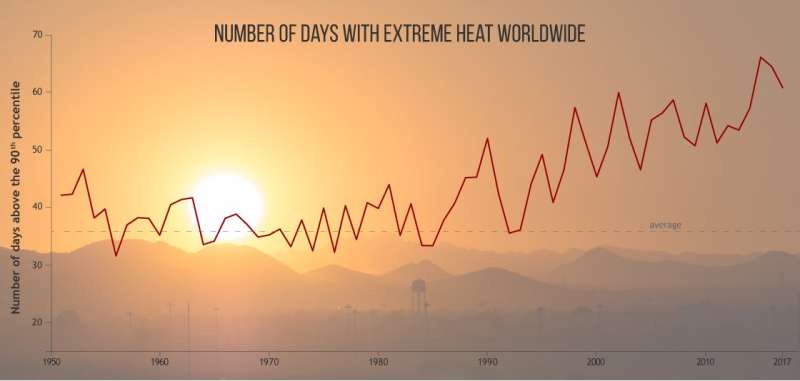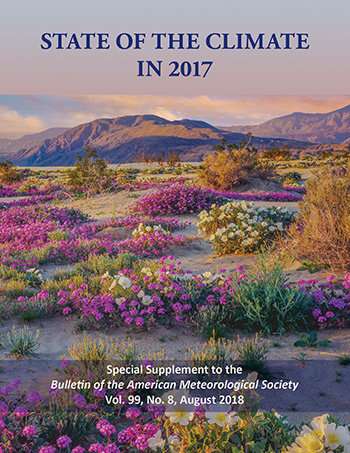International report confirms 2017 was one of three warmest years on record

It's official: 2017 was the third-warmest year on record for the globe, behind 2016 (first) and 2015, according to the 28th annual State of the Climate report. The planet also experienced record-high greenhouse gas concentrations as well as rises in sea level.
The annual checkup for the planetoffsite link, led by scientists from NOAA's National Centers for Environmental Information and published by the Bulletin of the American Meteorological Society, is based on contributions from more than 500 scientists in 65 countries and offers insight on global climate indicators, extreme weather events and other valuable environmental data.
Notable findings from the international report include:
- Levels of greenhouse gases were the highest on record. Major greenhouse gas concentrations in the atmosphere – including carbon dioxide (CO2), methane and nitrous oxide – reached new record highs. The 2017 average global CO2 concentration was 405 parts per million, the highest measured in the modern 38-year global climate record and records created from ice-core samples dating back as far as 800,000 years.
- Sea level rise hit a new high – about 3 inches (7.7 cm) higher than the 1993 average. Global sea level is rising at an average rate of 1.2 inches (3.1 cm) per decade.
- Heat in the upper ocean hit a record high, reflecting the continued accumulation of thermal energy in the uppermost 2,300 feet of the world's oceans.
- Global land and ocean combined surface temperature reached a near-record high. Depending on the dataset, average global surface temperatures were 0.68-0.86 of a degree F (0.38-0.48 of a degree C) above the 1981-2010 average. This marks 2017 as having the second or third warmest annual global temperature since records began in the mid- to late 1800s.
- Sea surface temperatures hit a near-record high. Though the global average sea surface temperature in 2017 was slightly below the 2016 value, the long-term trend remained upward.
- Drought dipped and then rebounded. The global area of drought fell sharply in early 2017 before rising to above-average values later in the year.
- Arctic maximum sea ice coverage fell to a record low. The 2017 maximum extent (coverage) of Arctic sea ice was the lowest in the 38-year record. The September 2017 sea ice minimum was the eighth lowest on record, 25 percent smaller than the long-term average.
- The Antarctic also saw record-low sea ice coverage, which remained well below the 1981-2010 average. On March 1, 2017, the sea ice extent fell to 811,000 square miles (2.1 million square kilometers), the lowest observed daily value in the continuous satellite record that began in 1978.
- Unprecedented multiyear coral reef bleaching continued: A global coral bleaching event spanned from June 2014 through May 2017, resulting in unprecedented impacts on reefs. More than 95 percent of coral in some affected reef areas died.
- The total number of tropical cyclones were slightly above average overall. There were 85 named tropical cyclones in 2017, slightly above the 1981-2010 average of 82 storms.

More information: Access highlights from the BAMS State of the Climate in 2017 report: www.ametsoc.org/ams/index.cfm/ … tate-of-the-climate/
Journal information: Bulletin of the American Meteorological Society
Provided by NOAA Headquarters





















